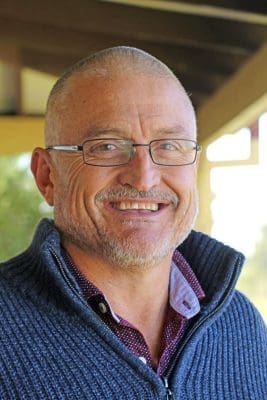SELECTION for genetic efficiency during times of drought and high feed costs will soon be a reality for commercial beef producers.

David Johnston
Animal Genetics and Breeding Unit principal scientist Dr David Johnston outlined the new BreedObject Version 6.0 at a Reiland Angus seminar at Wagga last month.
BreedObject is a software tool for use with BreedPlan to assist the targeting of beef breeding programs by calculating the optimum mix of estimated breeding values (EBVs) for any give situation.
The available BreedPlan EBVs are given economic weightings and combined into a single EBV, the $INDEX, enabling a group of animals to be ranked for a variety of purposes.
BreedObject Version 6.0 will include NFI (net feed intake) EBVs in the indexes and an improved inclusion of all feed costs.
Features include an enhanced feedlot phase modeling for pasture-feedlot systems, greater growth curve modeling, enhanced cow weight and cow condition score valuing, and methane (carbon) costing.
Example modelling was based on a self replacing herd of 650kg cows in body condition score three at joining, producing 100 day fed steers weighing 640kg at 22 months.
Dr Johnston said Angus bulls may change in their ranking under BreedObject V6.0 when accounting for feed costs, feed requirement and residual feed intake.
Residual feed intake is the daily feed intake minus the expected intake given the animal’s weight and weight gain.
“There is no one trait that drives profitability – they all impact differently on costs and returns,’’ Dr Johnston said.
“Traits also differ in their degree of genetic control and some traits can cause an unfavourable change in another.
“BreedObject models your view of the future – the outcome of mating a bull to a cow today will be five to 10 years before you see it in the daughters within the herd.
“The first thing we do is define the breeding system, the market and production environment.
“When we are setting these breeding objectives, it’s valuing the genetics of a bull across an entire production system – it’s not just maximizing profit to the feedlot or on-farm.’’
The feed requirement for production, residual or net feed intake, NFI EBVs, and the changing price of feed are all combined into a $EBV.
Net feed intake is 40 per cent heritable, higher or similar to growth or carcase traits.
Post weaning and finishing net feed intake are used to calculate NFI EBVs.
The trait is slightly negatively correlated with weight but positive with fat and marbling.
“The more NFI efficient animals on average are leaner with less marbling but those correlations aren’t strong,’’ Dr Johnston said.
“You have to be wary there will be NFI efficient bulls which are not high marbling.
“In the Angus sire summary, there is a -1.33 to +1.67 kg spread in the NFI EBVs in some of the top bulls so their progeny will differ on average by 1.5kg feed intake a day for the same weight and gain.
“The dollar value is not insignificant across 40,000 animals in a feedlot.’’
Dr Johnston said a model of the growth curve of a cow over a production cycle was used to calculate the indexes in BreedObject V6.0.
All the feed requirements over calving, lactation and weaning plus body condition score are given an economic value.
“We have produced research $EBVs using the Angus sire summary to estimate genetic trends over the last 30 years,’’ Dr Johnston said.
“Cow weight has increased along with sale weight, slightly improved cow condition score and increased marbling.
“But, through our selections, we have increased feed requirement and residual feed intake in Angus cattle, making them slightly less efficient.
“We need to be fully costing feed in developing our breeding objectives, measure feed intake – but it’s not just trying to breed smaller cows, it is multi-trait selection for early growth and carcase. We need to measure cow weights to benchmark fat EBVs in your production environment – people are selecting for positive fat blindly.
“The key is cow body condition score – higher milk EBV could also be stripping the fat off cows. Fertility is not fat – positive fat EBV bulls will not always get more calves, negative fat bulls won’t give less calves, neither will big mature cow weights.
“It’s the days to calving EBV which will predict the differences in fertility.’’
Dr Johnston recommended constructing all new $indexes for beef breeds using BreedObject V6.0, and including feed costs and residual feed intake in the future breeding objective.
“We need to measure intake and generate NFI EBVs, with commercial producers using those indexes to buy bulls and keep an eye on mature cow weight.’’
Dr Johnston said more research was needed on residual cow intake, cow body condition score EBVs and cow traits measured at joining rather than weaning.
